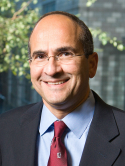Textured versus smooth tissue expanders: A comparison of complications in 3526 breast reconstructions Journal Article
| Authors: | Nelson, J. A.; Rubenstein, R. N.; Vorstenbosch, J.; Haglich, K.; Poulton, R. T.; McGriff, D.; Stern, C. S.; Coriddi, M.; Cordeiro, P. G.; McCarthy, C. M.; Disa, J. J.; Mehrara, B. J.; Matros, E. |
| Article Title: | Textured versus smooth tissue expanders: A comparison of complications in 3526 breast reconstructions |
| Abstract: | Background: Increased understanding of breast implant-associated anaplastic large-cell lymphoma has led to a shift away from textured breast devices. A few small studies have compared the complication rates of textured and smooth tissue expanders (TEs). The aim of this study was to compare complication profiles in patients undergoing two-stage postmastectomy breast reconstruction with either textured or smooth TEs.Methods: The authors performed a retrospective review of female patients who underwent immediate breast reconstruction with textured or smooth TEs from 2018 to 2020 at their institution. Rates of seroma, infection/cellulitis, malposition/rotation, exposure, and TE loss were analyzed in the overall cohort and subgroups undergoing prepectoral and subpectoral TE placement. A propensity score-matched analysis was used to decrease the effects of confounders comparing textured and smooth TEs.Results: The authors analyzed 3526 TEs (1456 textured and 2070 smooth). More frequent use of acellular dermal matrix, SPY angiography, and pre pectoral TE placement was noted in the smooth TE cohort (P < 0.001). Univariate analysis suggested higher rates of infection/cellulitis, malposition/rotation, and exposure in smooth TEs (all P < 0.01). Rates of TE loss did not differ. After propensity matching, no differences were noted in infection or TE loss. Prepectoral smooth expanders had increased rates of malposition/rotation. Conclusions: TE surface type did not affect rates of TE loss, although increased rates of expander malposition were noted in the smooth prepectoral cohort. Further research is needed to examine breast implant-associated anaplastic large-cell lymphoma risk with temporary textured TE exposure to improve decision-making. (Plast. Reconstr. Surg. 153: 262e, 2024.)CLINICAL QUESTION/LEVEL OF EVIDENCW: Therapeutic, III. |
| Keywords: | experience; implants; surface |
| Journal Title: | Plastic and Reconstructive Surgery |
| Volume: | 153 |
| Issue: | 2 |
| ISSN: | 0032-1052 |
| Publisher: | Lippincott Williams & Wilkins |
| Date Published: | 2024-02-01 |
| Start Page: | 262e |
| End Page: | 272e |
| Language: | English |
| ACCESSION: | WOS:001150115100038 |
| DOI: | 10.1097/prs.0000000000010600 |
| PROVIDER: | wos |
| PUBMED: | 37104467 |
| PMCID: | PMC11275556 |
| Notes: | The MSK Cancer Center Support Grant (P30 CA008748) is acknowledged in the PubMed record and PDF. Corresponding MSK author is Jonas A. Nelson -- Source: Wos |
Altmetric
Citation Impact
BMJ Impact Analytics
MSK Authors
Related MSK Work













